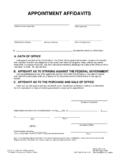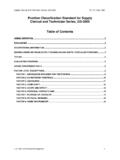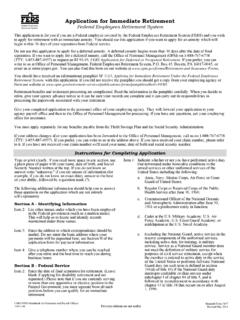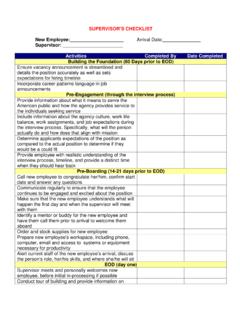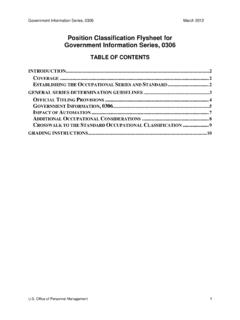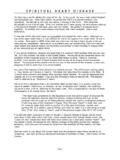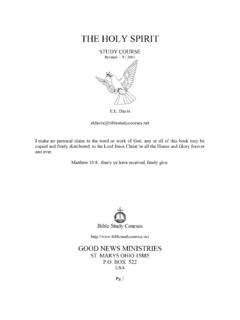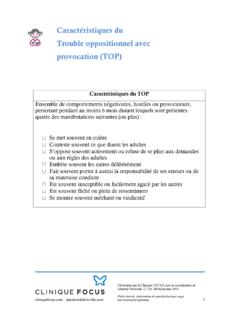Transcription of The Douglas Factors - OPM.gov
1 The Merit Systems Protection Board in its landmark decision, Douglas vs. Veterans Administration, 5 280 (1981), established criteria that supervisors must consider in determining an appropriate penalty to impose for an act of employee misconduct. The Douglas Factors The following relevant Factors must be considered in determining the severity of the discipline: (1) The nature and seriousness of the offense, and its relation to the employee s duties, position, and responsibilities, including whether the offense was intentional or technical or inadvertent, or was committed maliciously or for gain, or was frequently repeated; (2) the employee s job level and type of employment, including supervisory or fiduciary role, contacts with the public, and prominence of the position; (3) the employee s past disciplinary record; (4) the employee s past work record, including length of service, performance on the job, ability to get along with fellow workers, and dependability.
2 (5) the effect of the offense upon the employee s ability to perform at a satisfactory level and its effect upon supervisors confidence in the employee s work ability to perform assigned duties; (6) consistency of the penalty with those imposed upon other employees for the same or similar offenses; (7) consistency of the penalty with any applicable agency table of penalties; (8) the notoriety of the offense or its impact upon the reputation of the agency; (9) the clarity with which the employee was on notice of any rules that were violated in committing the offense, or had been warned about the conduct in question; (10) the potential for the employee s rehabilitation; (11) mitigating circumstances surrounding the offense such as unusual job tensions, personality problems, mental impairment, harassment, or bad faith, malice or provocation on the part of others involved in the matter; and (12) the adequacy and effectiveness of alternative sanctions to deter such conduct in the future by the employee or others.
3 THIS IS NOT AN ALL INCLUSIVE LIST!!!!!!!

